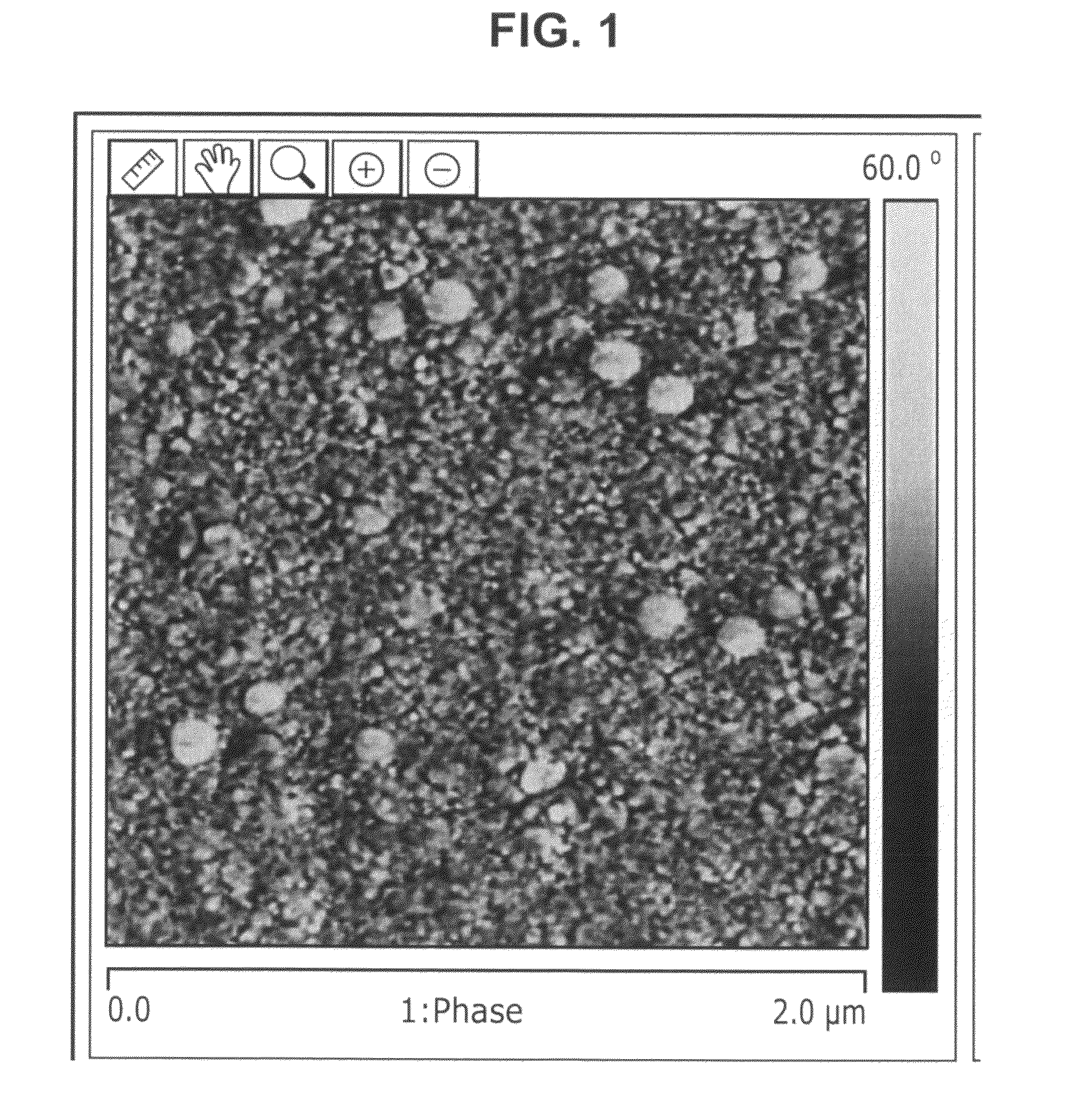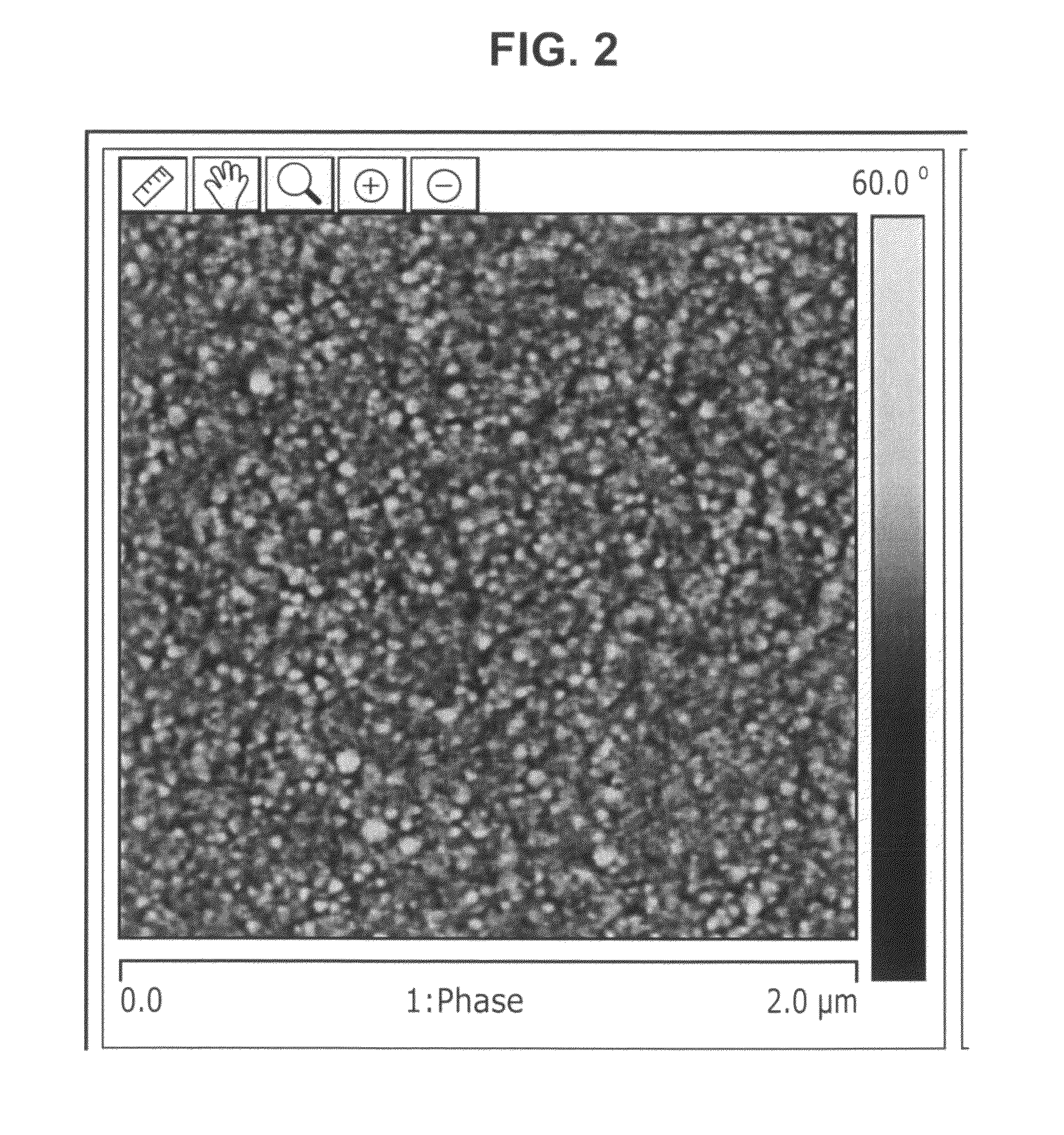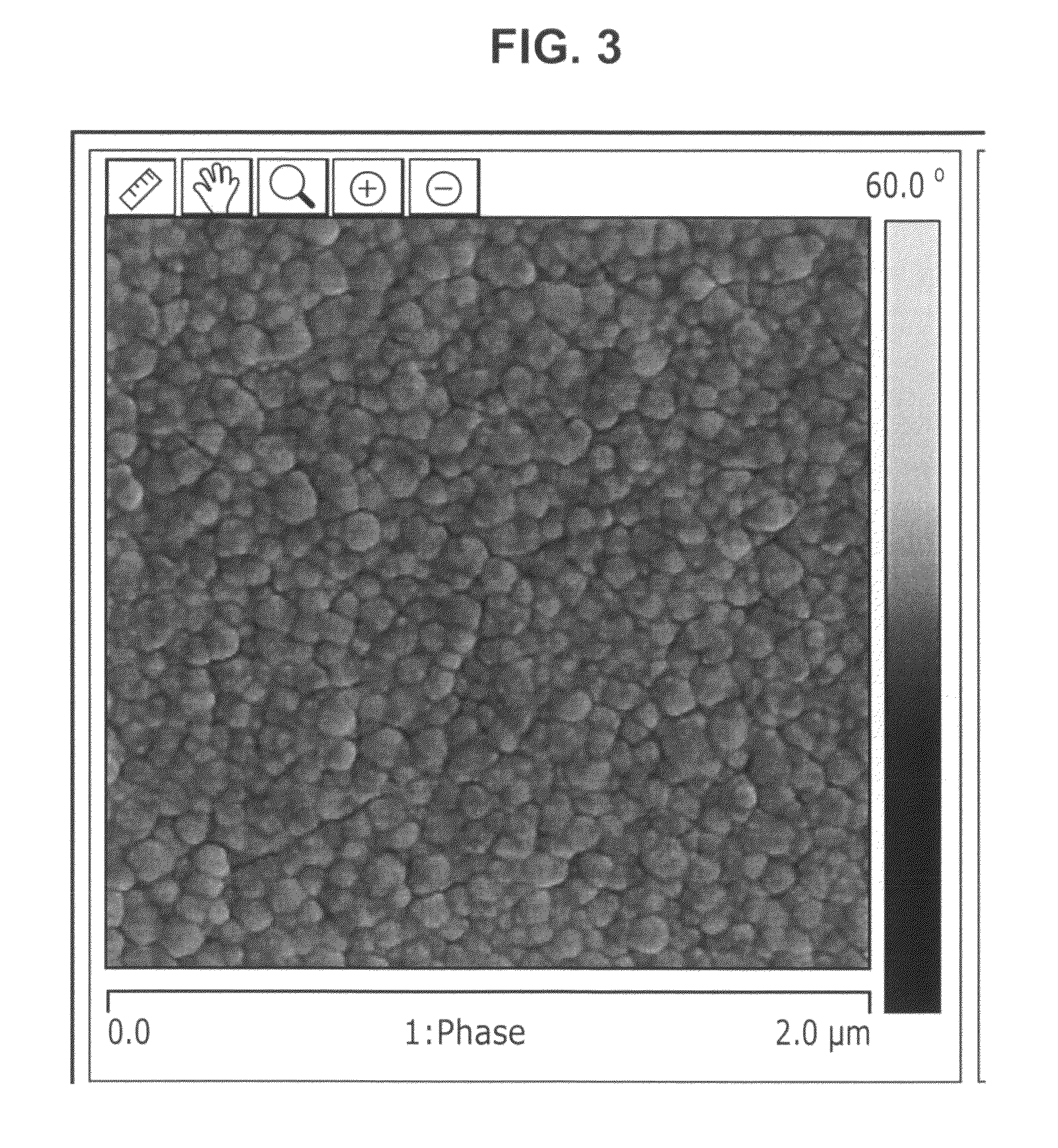Low VOC aqueous compositions of acrylic-urethane block copolymers
a technology of acrylic-urethane block and copolymer, which is applied in the direction of polyurea/polyurethane coatings, coatings, etc., can solve the problems of poor hardness of paints, inability to produce solvent-free and inability to meet the requirements of aqueous solutions of urethane polymers
- Summary
- Abstract
- Description
- Claims
- Application Information
AI Technical Summary
Benefits of technology
Problems solved by technology
Method used
Image
Examples
example 1
Synthesis of 2HEDS-Containing PUD
[0133]A 1 liter 3 neck flask equipped with a reflux condenser and a nitrogen inlet tube was charged with 21.0 grams of DMPA and 120 grams of NMP. To this mixtures was added in order: 12.0 grams 2HEDS, 291.4 grams of PTMEG-1000 and 275.6 grams of DESW (Desmodur W). Agitation was started and a nitrogen atmosphere was created in the reactor. The mixture was heated to 90° C. After 1 hour at 90° C., 0.6 grams DBTL was added and the mixture was kept at 90° C. for another 2 hours at before cooling to 45° C. The residual NCO content at this point was measured to be 5.84 wt %. When the temperature reached 45° C., 15.5 grams of triethylamine were added to the batch. The batch was stirred for about 10 minutes before 687.6 grams of the mixture were dispersed into 1009.4 grams of de-ionized water. During the dispersion process the temperature of the dispersion was kept between 15° C. and 18° C. When the dispersion process was completed the dispersion was stirred ...
example 2
Synthesis of 2HEDS-Containing PUD with Reduced Level of Polyol
[0134]A 1 liter 3 neck flask equipped with a reflux condenser and a nitrogen inlet tube was charged with 19.9 grams of DMPA and 75.0 grams of NMP. To this mixtures was added in order: 11.4 grams 2HEDS, 99.3 grams of PTMEG-1000 and 169.4 grams of Desmodur W. Agitation was started and a nitrogen atmosphere was created in the reactor. The mixture was heated to 90° C. After 1 hour at 90° C., 0.3 grams DBTL was added and the mixture was kept at 90° C. for another 2 hours at before cooling to 65° C. The residual NCO content at this point was measured to be 6.93 wt %. When the temperature reached 65° C., 14.6 grams of triethylamine were added to the batch. The batch was stirred for about 10 minutes before 358.8 grams of the mixture were dispersed into 484.5 grams of de-ionized water containing 3.58 grams of SLS, 5.8 grams Triton XN455 and 1.11 grams of triethyl amine. During the dispersion process the temperature of the dispersi...
examples 3-9
Synthesis of PUDs
[0137]Examples 3-9 all follow the procedure of Example 2 as described above, with the modifications to the reagents as shown in Tables 1 and 2. Examples 3 and 4 continue the series of 2HEDS-containing PUDs with reduced levels of polyol. Example 5 is a comparative example (forming a conventional PUD) that utilizes 1,4-butanediol in place of the 2-hydroxyethyl disulfide of the current invention. Examples 6-9 provide 2HEDS-containing PUDs using BMA (Example 6), MMA (Example 7), and DPGDME (Examples 8 and 9) as the solvent in the polyurethane-prepolymer step of the synthesis. Tables 2 and 3, below, show quantities of reactants and reagents used in preparing PUD Examples 1-9.
[0138]
TABLE 2Reactants and Reagents (grams) for Preparation of PUDs, Examples 1-5IngredientExample 1Example 2Example 3Example 4Example 5*NMP120.075.075.075.060.0DMPA21.019.923.025.315.02HEDS12.011.421.529.4—1,4-Butanediol————4.5PTMEG-1000291.499.460.229.9127.9Desmodur W275.6169.4195.3215.4152.6DBTL0....
PUM
| Property | Measurement | Unit |
|---|---|---|
| weight percent | aaaaa | aaaaa |
| weight percent | aaaaa | aaaaa |
| weight percent | aaaaa | aaaaa |
Abstract
Description
Claims
Application Information
 Login to view more
Login to view more - R&D Engineer
- R&D Manager
- IP Professional
- Industry Leading Data Capabilities
- Powerful AI technology
- Patent DNA Extraction
Browse by: Latest US Patents, China's latest patents, Technical Efficacy Thesaurus, Application Domain, Technology Topic.
© 2024 PatSnap. All rights reserved.Legal|Privacy policy|Modern Slavery Act Transparency Statement|Sitemap



